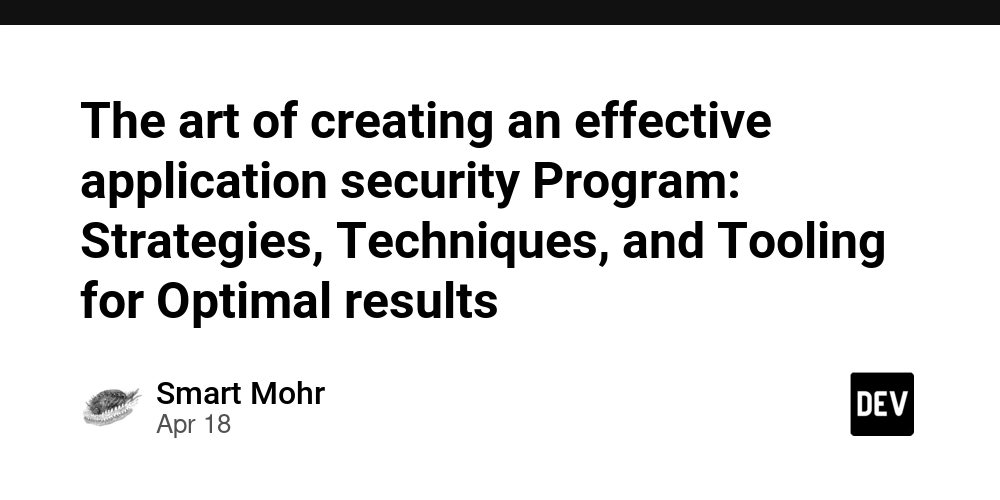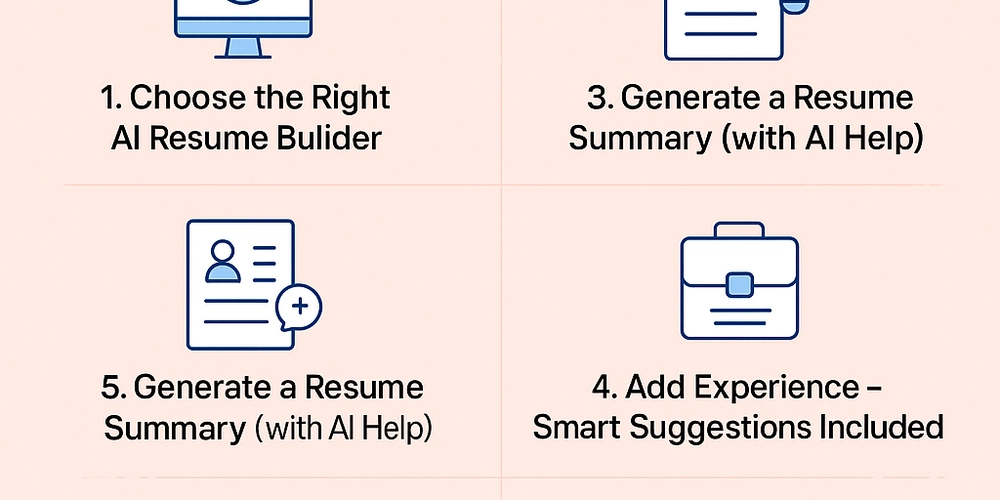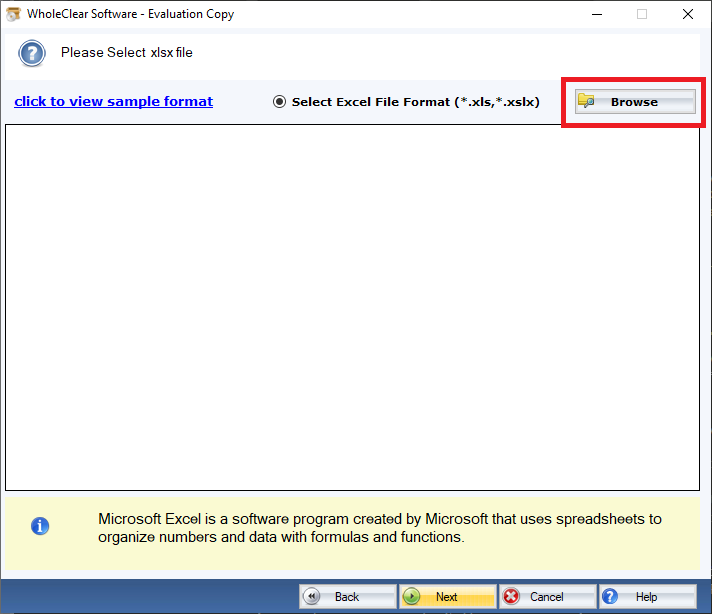The art of creating an effective application security Program: Strategies, Techniques, and Tooling for Optimal results
AppSec is a multifaceted, robust strategy that goes far beyond basic vulnerability scanning and remediation. A comprehensive, proactive strategy is required to incorporate security into every phase of development. The constantly changing threat landscape and the ever-growing complexity of software architectures have prompted the need for a proactive and holistic approach. This comprehensive guide provides most important elements, best practices, and cutting-edge technology that help to create an efficient AppSec program. It helps companies enhance their software assets, minimize risks and promote a security-first culture. At the core of a successful AppSec program lies a fundamental shift in mindset which sees security as a crucial part of the development process, rather than a secondary or separate endeavor. This paradigm shift necessitates close collaboration between security teams, developers, and operations personnel, breaking down silos and instilling a belief in the security of the apps that they design, deploy and maintain. DevSecOps lets organizations incorporate security into their process of development. It ensures that security is addressed throughout the process starting from the initial ideation stage, through design, and implementation, all the way to ongoing maintenance. This approach to collaboration is based on the creation of security standards and guidelines, that provide a structure for secure coding, threat modeling and vulnerability management. how to use agentic ai in application security These guidelines must be based on industry best practices such as the OWASP top 10 list, NIST guidelines, and the CWE. They should take into account the particular requirements and risk that an application's and business context. By creating these policies in a way that makes them accessible to all parties, organizations can guarantee a consistent, standard approach to security across their entire portfolio of applications. To implement these guidelines and make them practical for development teams, it's vital to invest in extensive security education and training programs. These programs should be designed to equip developers with expertise and knowledge required to write secure code, spot possible vulnerabilities, and implement best practices for security throughout the development process. Training should cover a broad variety of subjects including secure coding methods and the most common attack vectors, to threat modeling and security architecture design principles. Organizations can build a solid foundation for AppSec through fostering an environment that encourages constant learning and providing developers with the tools and resources that they need to incorporate security into their work. Security testing is a must for organizations. and verification procedures as well as training programs to identify and fix vulnerabilities before they can be exploited. This requires a multi-layered method that includes static and dynamic analysis techniques in addition to manual penetration testing and code reviews. Early in the development cycle, Static Application Security Testing tools (SAST) can be utilized to identify vulnerabilities such as SQL Injection, cross-site scripting (XSS) and buffer overflows. Dynamic Application Security Testing tools (DAST) on the other hand can be utilized to test simulated attacks against applications in order to identify vulnerabilities that might not be detected through static analysis. These tools for automated testing are extremely useful in identifying vulnerabilities, but they aren't a solution. Manual penetration tests and code reviews performed by highly skilled security experts are crucial in identifying more complex business logic-related vulnerabilities that automated tools may miss. Combining automated testing and manual validation, organizations are able to get a greater understanding of their application's security status and make a decision on the best remediation strategy based upon the severity and potential impact of the vulnerabilities identified. Enterprises must make use of modern technology, like machine learning and artificial intelligence to enhance their capabilities in security testing and vulnerability assessments. AI-powered tools can analyze vast amounts of code and information, identifying patterns and abnormalities that could signal security concerns. They also be taught from previous vulnerabilities and attack patterns, continually improving their ability to detect and prevent emerging threats. Code property graphs can be a powerful AI application for AppSec. They can be used to identify and correct vulnerabilities more quickly and efficiently. CPGs are a detailed representation of an application’s codebase that not only shows its syntax but as well as complex dependencies and connections between components. Utilizing the power of CPGs artificial intelligence-powered tools, they are able to do a deep, context-aware assessmen

AppSec is a multifaceted, robust strategy that goes far beyond basic vulnerability scanning and remediation. A comprehensive, proactive strategy is required to incorporate security into every phase of development. The constantly changing threat landscape and the ever-growing complexity of software architectures have prompted the need for a proactive and holistic approach. This comprehensive guide provides most important elements, best practices, and cutting-edge technology that help to create an efficient AppSec program. It helps companies enhance their software assets, minimize risks and promote a security-first culture.
At the core of a successful AppSec program lies a fundamental shift in mindset which sees security as a crucial part of the development process, rather than a secondary or separate endeavor. This paradigm shift necessitates close collaboration between security teams, developers, and operations personnel, breaking down silos and instilling a belief in the security of the apps that they design, deploy and maintain. DevSecOps lets organizations incorporate security into their process of development. It ensures that security is addressed throughout the process starting from the initial ideation stage, through design, and implementation, all the way to ongoing maintenance.
This approach to collaboration is based on the creation of security standards and guidelines, that provide a structure for secure coding, threat modeling and vulnerability management. how to use agentic ai in application security These guidelines must be based on industry best practices such as the OWASP top 10 list, NIST guidelines, and the CWE. They should take into account the particular requirements and risk that an application's and business context. By creating these policies in a way that makes them accessible to all parties, organizations can guarantee a consistent, standard approach to security across their entire portfolio of applications.
To implement these guidelines and make them practical for development teams, it's vital to invest in extensive security education and training programs. These programs should be designed to equip developers with expertise and knowledge required to write secure code, spot possible vulnerabilities, and implement best practices for security throughout the development process. Training should cover a broad variety of subjects including secure coding methods and the most common attack vectors, to threat modeling and security architecture design principles. Organizations can build a solid foundation for AppSec through fostering an environment that encourages constant learning and providing developers with the tools and resources that they need to incorporate security into their work.
Security testing is a must for organizations. and verification procedures as well as training programs to identify and fix vulnerabilities before they can be exploited. This requires a multi-layered method that includes static and dynamic analysis techniques in addition to manual penetration testing and code reviews. Early in the development cycle, Static Application Security Testing tools (SAST) can be utilized to identify vulnerabilities such as SQL Injection, cross-site scripting (XSS) and buffer overflows. Dynamic Application Security Testing tools (DAST) on the other hand can be utilized to test simulated attacks against applications in order to identify vulnerabilities that might not be detected through static analysis.
These tools for automated testing are extremely useful in identifying vulnerabilities, but they aren't a solution. Manual penetration tests and code reviews performed by highly skilled security experts are crucial in identifying more complex business logic-related vulnerabilities that automated tools may miss. Combining automated testing and manual validation, organizations are able to get a greater understanding of their application's security status and make a decision on the best remediation strategy based upon the severity and potential impact of the vulnerabilities identified.
Enterprises must make use of modern technology, like machine learning and artificial intelligence to enhance their capabilities in security testing and vulnerability assessments. AI-powered tools can analyze vast amounts of code and information, identifying patterns and abnormalities that could signal security concerns. They also be taught from previous vulnerabilities and attack patterns, continually improving their ability to detect and prevent emerging threats.
Code property graphs can be a powerful AI application for AppSec. They can be used to identify and correct vulnerabilities more quickly and efficiently. CPGs are a detailed representation of an application’s codebase that not only shows its syntax but as well as complex dependencies and connections between components. Utilizing the power of CPGs artificial intelligence-powered tools, they are able to do a deep, context-aware assessment of an application's security posture and identify vulnerabilities that could be overlooked by static analysis techniques.
Moreover, CPGs can enable automated vulnerability remediation using the help of AI-powered repair and transformation methods. By understanding the semantic structure of the code, as well as the characteristics of the identified vulnerabilities, AI algorithms can generate targeted, specific fixes to address the root cause of the issue instead of merely treating the symptoms. This technique not only speeds up the remediation process, but also reduces the risk of introducing new weaknesses or breaking existing functionality.
Integrating security testing and validation in the continuous integration/continuous deployment (CI/CD), pipeline is a key component of a highly effective AppSec. Automating security checks, and integration into the build-and deployment process allows companies to identify weaknesses early and stop them from affecting production environments. The shift-left security method allows for more efficient feedback loops and decreases the time and effort needed to discover and fix vulnerabilities.
For organizations to achieve the required level, they have to invest in the proper tools and infrastructure to support their AppSec programs. It is not just the tools that should be used for security testing, but also the platforms and frameworks which can facilitate integration and automatization. Containerization technologies such as Docker and Kubernetes can play a crucial role in this regard by providing a consistent, reproducible environment for conducting security tests, and separating the components that could be vulnerable.
Effective communication and collaboration tools are just as important as technology tools to create an environment of safety, and helping teams work efficiently with each other. Issue tracking tools, such as Jira or GitLab help teams prioritize and manage the risks, while chat and messaging tools such as Slack or Microsoft Teams can facilitate real-time communication and knowledge sharing between security experts as well as development teams.
Ultimately, the achievement of an AppSec program is not just on the tools and techniques employed but also on the individuals and processes that help the program. To create a culture of security, you require strong leadership to clear communication, as well as the commitment to continual improvement. Companies can create an environment in which security is more than just a box to check, but an integral part of development through fostering a shared sense of responsibility, encouraging dialogue and collaboration, providing resources and support and promoting a belief that security is a shared responsibility.
For their AppSec programs to remain effective for the long-term Organizations must set up relevant metrics and key performance indicators (KPIs). These KPIs will help them track their progress and identify areas of improvement. These measures should encompass the entire lifecycle of an application starting from the number and type of vulnerabilities found in the development phase through to the time needed for fixing issues to the overall security posture. These indicators can be used to demonstrate the benefits of AppSec investment, identify patterns and trends and assist organizations in making an informed decision on where to focus on their efforts.
In addition, organizations should engage in continuous learning and training to stay on top of the ever-changing threat landscape as well as emerging best methods. This may include attending industry events, taking part in online-based training programs and working with outside security experts and researchers in order to stay abreast of the latest developments and methods. By cultivating a culture of constant learning, organizations can make sure that their AppSec program is flexible and resilient in the face of new threats and challenges.
It is also crucial to understand that securing applications is not a single-time task and is an ongoing process that requires a constant dedication and investments. As new technologies develop and development practices evolve companies must constantly review and update their AppSec strategies to ensure that they remain relevant and in line with their business goals. By adopting a continuous improvement mindset, promoting collaboration and communication, and using advanced technologies like CPGs and AI, organizations can create a robust and adaptable AppSec program that does not just protect their software assets, but allow them to be innovative in a rapidly changing digital environment.
how to use agentic ai in application security




























![[Webinar] AI Is Already Inside Your SaaS Stack — Learn How to Prevent the Next Silent Breach](https://blogger.googleusercontent.com/img/b/R29vZ2xl/AVvXsEiOWn65wd33dg2uO99NrtKbpYLfcepwOLidQDMls0HXKlA91k6HURluRA4WXgJRAZldEe1VReMQZyyYt1PgnoAn5JPpILsWlXIzmrBSs_TBoyPwO7hZrWouBg2-O3mdeoeSGY-l9_bsZB7vbpKjTSvG93zNytjxgTaMPqo9iq9Z5pGa05CJOs9uXpwHFT4/s1600/ai-cyber.jpg?#)













































































































































![[The AI Show Episode 144]: ChatGPT’s New Memory, Shopify CEO’s Leaked “AI First” Memo, Google Cloud Next Releases, o3 and o4-mini Coming Soon & Llama 4’s Rocky Launch](https://www.marketingaiinstitute.com/hubfs/ep%20144%20cover.png)




































































































































































































![Rogue Company Elite tier list of best characters [April 2025]](https://media.pocketgamer.com/artwork/na-33136-1657102075/rogue-company-ios-android-tier-cover.jpg?#)








































































_Andreas_Prott_Alamy.jpg?width=1280&auto=webp&quality=80&disable=upscale#)




























































































![What’s new in Android’s April 2025 Google System Updates [U: 4/18]](https://i0.wp.com/9to5google.com/wp-content/uploads/sites/4/2025/01/google-play-services-3.jpg?resize=1200%2C628&quality=82&strip=all&ssl=1)










![Apple Watch Series 10 Back On Sale for $299! [Lowest Price Ever]](https://www.iclarified.com/images/news/96657/96657/96657-640.jpg)
![EU Postpones Apple App Store Fines Amid Tariff Negotiations [Report]](https://www.iclarified.com/images/news/97068/97068/97068-640.jpg)
![Apple Slips to Fifth in China's Smartphone Market with 9% Decline [Report]](https://www.iclarified.com/images/news/97065/97065/97065-640.jpg)


































































































































